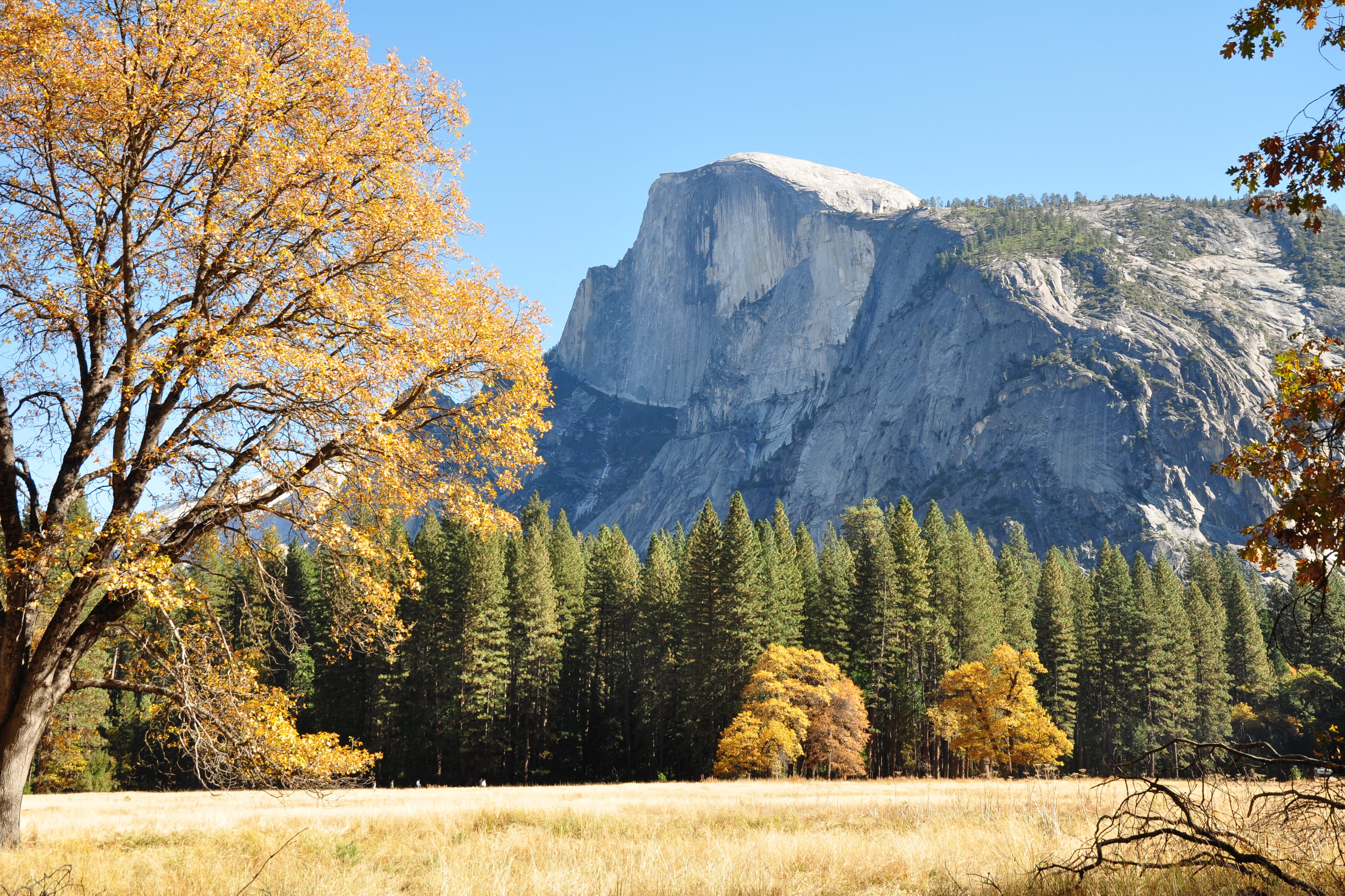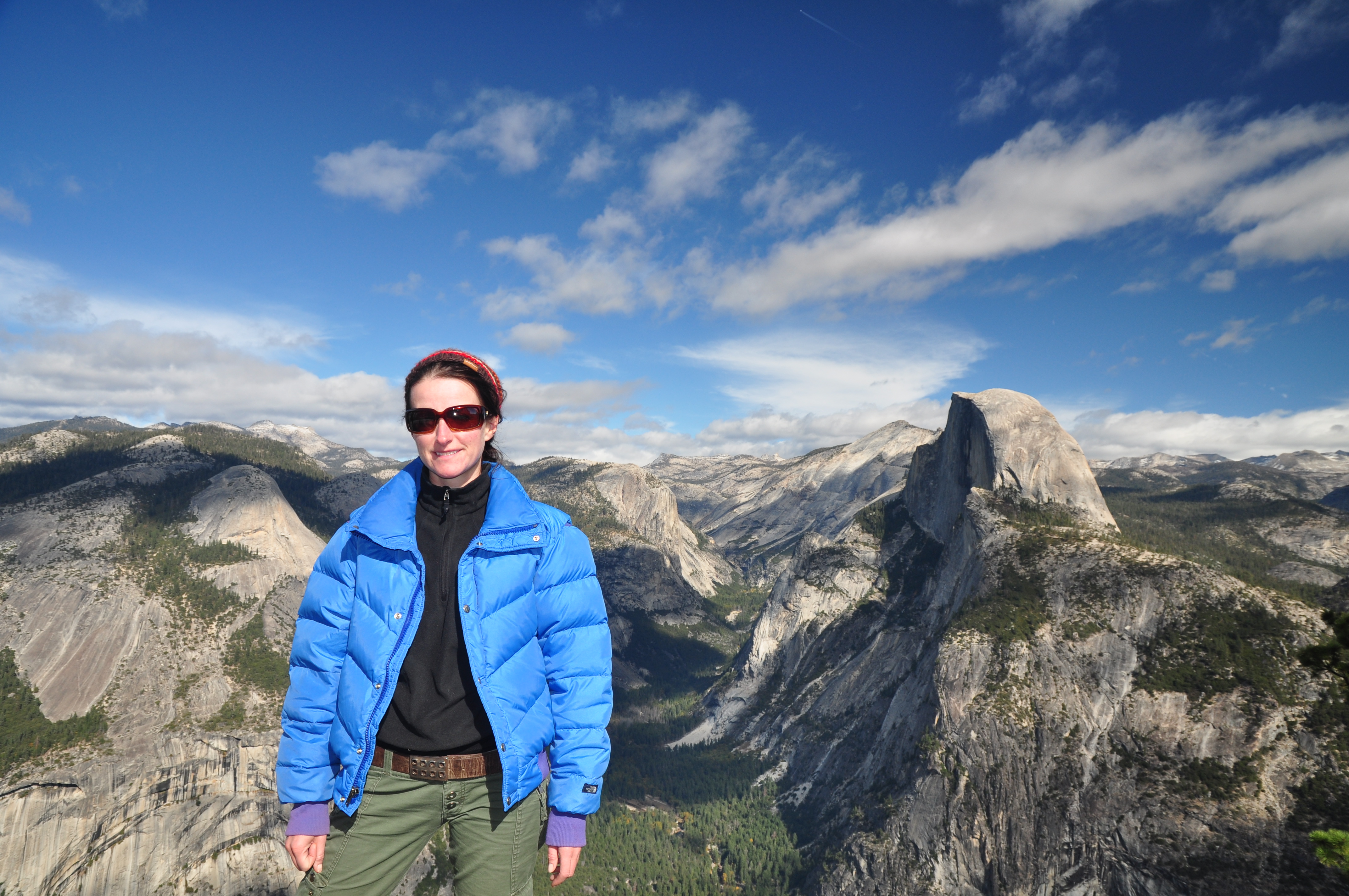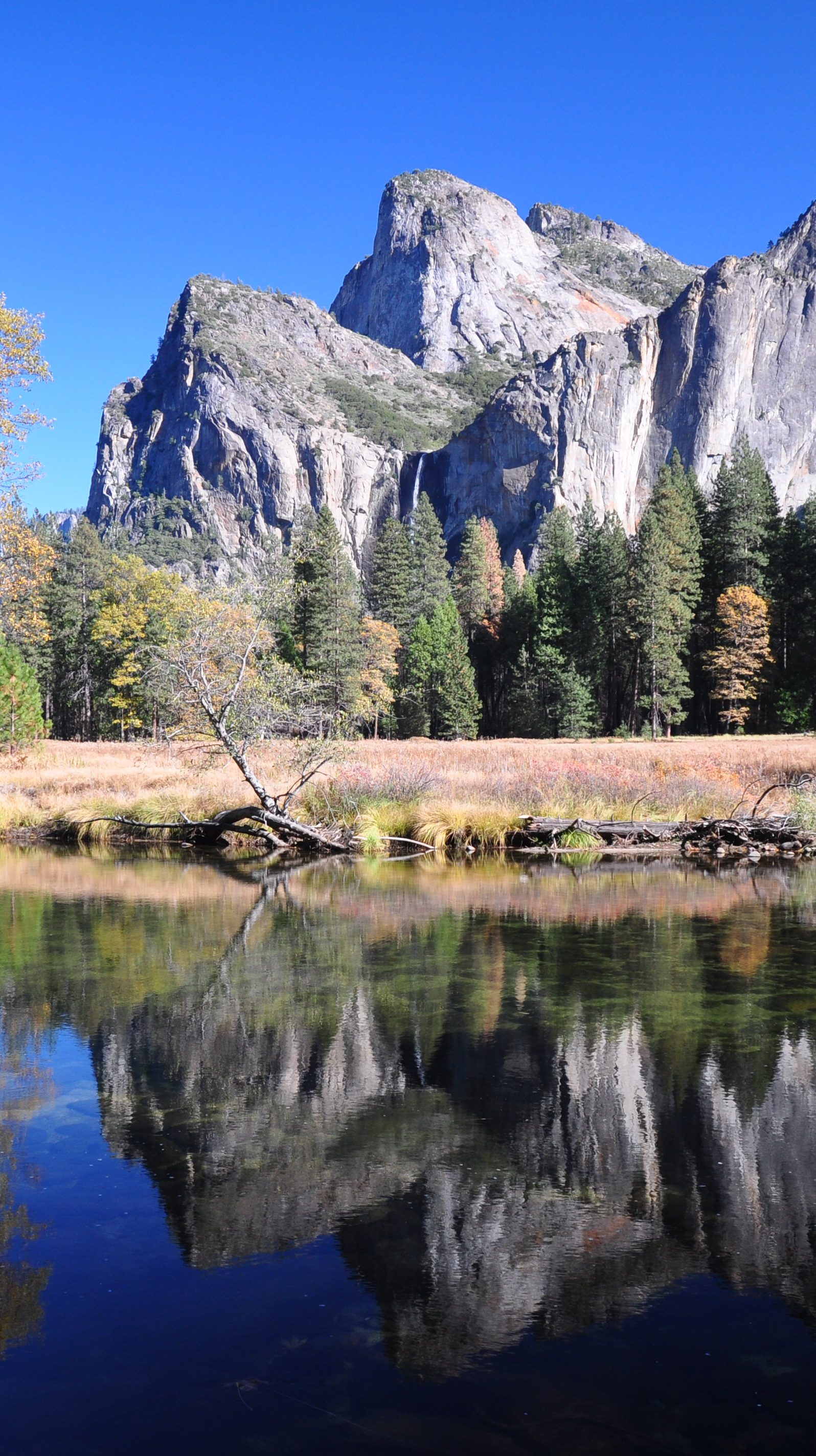
Mighty Time in Yosemite
GO LONG HAUL: Being woken by scavenging bears only whetted the appetite for a greater taste of the wild at California’s Yosemite National Park, writes RÓISÍN SORAHAN.
OUR BREATHS lingered in the chilly air as we muddled our way through the labyrinthine camp and pitched our tent under a cluster of pinewood trees.
If it hadn’t been for our neighbours’ giant RVs (recreational vehicles) and motor homes, fitted with satellite dishes and plasma TVs, we might almost have felt like pioneers. Our site was equipped with a picnic table, a fire pit and a metal bear box where we stored food and toiletries. I had never faced a bear and had pegged them for elusive, exotic creatures. But we had been warned that the hint of a Hershey bar or Dove soap could cause them to drop the cuddly facade and tear open a car door, or tent canvas.

Temptation out of harm’s way, we settled in for the night. But, barely warm enough in my sleeping bag and blankets, I slept fitfully and was easily woken by a dawn commotion. “Git away! Git on now!” accompanied by clanging saucepans. I wriggled my snout out of the flap and caught sight of a furry flank. Sleep forgotten, I was outside in moments. A black bear, head hung low like a scolded dog, stared back from the safety of the creek, clutching a stolen apple.
As you get older, firsts become scarcer and, as a result, more valued. My first bear. The morning shone. Soft autumn light warmed the campsite and the day just got better.
John Muir, America’s forerunner to the eco warrior, famously claimed that people need beauty as well as bread. As I caught my first glimpse of Yosemite Valley, it seemed I had been given more than my share.
Jutting peaks and sheer rock faces, carved by glaciers millennia ago, towered over pine trees and bleeding maples. The Merced River, following its lazy course, refracted light the length of the valley, glittering like a perfectly cut diamond.
Stupefied by months of dull skies and dreary routines, I felt like I’d been slipped a couple of hallucinogens. My head spun in a kaleidoscope of colour. It wasn’t New England’s shades, mind. Yosemite park is drawn from a different palette.
The medley of vegetation includes sun-soaked scrub and woodland oaks; three magnificent giant sequoia groves; mountain hemlock; sierra junipers; whitebark pine; red fir and, in Yosemite Valley, the showier deciduous trees, notably the dogwood maple which puts on its best display around mid-October.
We spent the first day exploring the valley – Yosemite’s centrepiece, though a mere 18sq km of the park’s expanse which covers 3,080sq km in total. We were warned that this area is often congested in the summer when day trippers collide with longer stay tourists. However, in autumn, after the hordes have passed through, the park breathes out, leaving visitors space to stretch and glut the senses.
Leaving the campsites, lodges, stores, restaurants, rangers’ offices, recycling and information centres behind us, we followed the course of the river through a string of meadows, under the shadow of waterfall-stained rocks, pausing to watch harnessed climbers scale “the nose” of El Capitan.

Some 900m of sheer granite, El Capitan lures big wall adventurers from across the globe. While we were there, the weather was ideal and the sun glinted off numerous dots, splashed against the cliff face like spatter paint blotches, clawing their way to the summit in a thrilling four to five-day ascent.
With more than 1,200km of hiking trails in Yosemite, we opted for easier routes – though no less dramatic for all that. The park is in the central Sierra Nevada mountain range and is a magic looking glass into the landscape that prevailed before the country was settled.
Despite the fact that visitors have been coming to Yosemite since the 1850s, the majority of the park is pristine. It supports a bewildering variety of plant species and ranges in altitude from 648m to 3,997m. The result is a dizzying mixture of unspoiled woodlands and meadows that include old growth forest unspoiled by logging.
Our days in Yosemite were perfect for hiking. Dry warmth without the summer swelter of the Californian sun meant that we could trek higher, for as long as our legs could take us. Climbing to Glacier Point, for its magnificent views over Half Dome, we crossed five vegetation zones, hardly passing a soul along the way.
On reaching the top, eyes dangling over the spectacle of wave after wave of glacier-capped peaks, we met a wedding party in full regalia, posing before the panorama. The flowing frocks and needle point heels made me wonder if there wasn’t an easier way to the summit. Sure enough, a bus poked its nose into the scene and a clatter of scouts spilled into the path of the cameras.
We left the fray by the mountain path and returned to the valley just as photographers in battle fatigues were coming out in their numbers to stalk the evening light. Working alone, armed with expensive cameras and heavy tripods, they burrowed into foxholes in sight of their prey. They had an image to capture and, in the face of their focus, the setting sun on Half Dome peak didn’t stand a chance. In Yosemite, you just can’t help yourself. The flight into the American wilderness is the hunt for beauty and the desire to capture and keep it.
John Muir campaigned vigorously in the 19th century for the preservation of such areas of pristine beauty.
Born in Scotland to a strict Presbyterian family who emigrated to the US in 1849, Muir exemplified the life described by naturalist philosophers of his time, such as Thoreau and Emerson. He nurtured the life of the soul, living simply for some years in a cabin he designed and built himself in Yosemite. The passion of his writings and the impact of his advocacy resulted in the founding of the US’s National Parks Service, described justifiably as “America’s best idea”.
The effect on the national psyche was immense as it redefined its relationship with the natural landscape. For the first time, places of beauty like the Sierra Nevada Mountains could be explored as spiritual temples, rather than natural resources to be conserved for national consumption. This led to the growing awareness that people were not made to spend their lives in sterile cubicles, pondering red staplers, starved of light. At some point, the spirit cries out to be fed.
Muir’s preaching seemed more pertinent than ever as we stood in Yosemite Valley, watching the sun ripen the granite rocks. Desperate to preserve this pristine wilderness, we drew our cameras and joined the beauty hunters to capture the fading light.
Get there
Airline carriers from Dublin to San Francisco include Aer Lingus (aerlingus.com), United Airlines (united.com), Continental (continental.com), BMI (flybmi.com), Lufthansa (lufthansa.com) and KLM (klm.com). It’s around four hours drive from San Francisco to Yosemite National Park.

Yosemite what to . . .
Bring
The weather in Yosemite varies greatly in autumn; from hot days in shorts in the valley to woollen hats and down jackets in higher altitudes. Nights are really cold, so bring thermal underwear and, if camping, a four-season tent and a good quality sleeping bag.
When to go
Yosemite Valley is open all year round, but many of the roads in the rest of the park are closed due to ice and snow in late autumn and throughout the winter. The park fully re-opens in mid to late spring.
Accommodation
There is a vast array of places to stay within the Yosemite Valley area, ranging from high-end hotels to cabins, camper homes and basic tent sites. Throughout the summer months, places need to be booked weeks and sometimes even months in advance. However, there is greater flexibility and availability in autumn after the Labor Day holiday (the first Monday in September). Visit nps.gov for accommodation and permit details.
Planning your trip
The National Parks Service has federal responsibility for America’s national parks. Visit its website, nps.gov, before planning your trip. Note that all overnight trips into the back country require a wilderness permit.
© Róisín Sorahan
Article originally published by The Irish Times